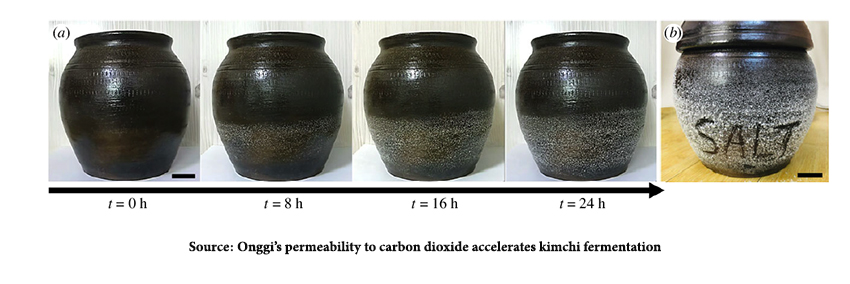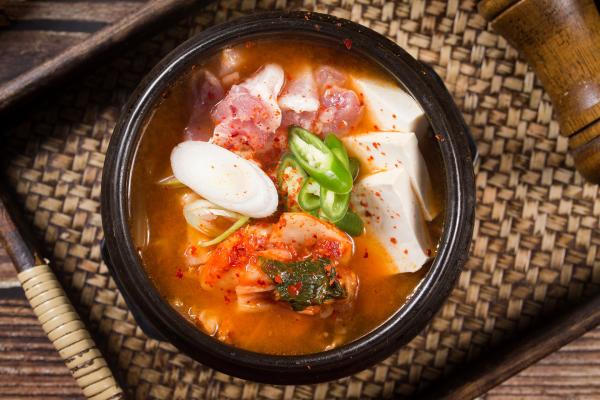Kimchi, most often fermented cabbage, is over 2,000 years old. Cabbage, with a bit of water, salt and spices, are placed in a container – in this case, the traditional onggi – and allowed to ferment. They produce a pickled vegetable, the product of the fermentation efforts of Lactobacillus, which imparts the lactic acid tang. The presence of salt acts as a preservative and creates an ecology where only salt-loving lactic acid bacteria thrive.
“We wanted to find the ‘secret sauce’ for how onggi makes Kimchi taste so good. So, we measured how the gases evolved while Kimchi fermented inside the onggi — something no one had done before.”
- David Hu, Professor School of Mechanical Engineering at Georgia Tech
Today, unless you are discussing some small-batch artisanal Kimchi, the fermentation occurs in steel and plastic vats. But those modern materials are not nearly as productive as the traditional clay onggi which, over a four-week fermentation:
- Has 100 times more lactic acid bacteria.
- 100-fold less aerobic bacteria that impart a “foul taste.”
- And increased acidity and anti-oxidant properties than Kimchi fermented in stainless steel.
The researcher felt that the secret to the onggi was its porous nature, which transmitted far more oxygen and carbon dioxide than its steel and polyethylene brothers. They began by filming the fermentation process.
Over the first day or two, salt pulls out about 10% of the liquid within the cabbage into the container, a glass jar. Over the next few days, you can see bubbling as bacteria produce carbon dioxide. The researcher wondered if the changing internal atmosphere had a role in fermentation.
 Through various testing and imaging, it became apparent that onggi was permeable to gases and liquids. As the fermentation proceeds, salt forms on the outside of the onggi, described historically as a “salt flower” and believed by chefs to indicate a “good quality fermentation vessel.” The combination of escaping water and carbon dioxide creates a one-way escape valve, maintaining a stable internal environment that accelerates the growth of the desired lactobacteria. When Kimchi ferments in non-permeable containers, rising carbon dioxide levels kill the lactobacteria.
Through various testing and imaging, it became apparent that onggi was permeable to gases and liquids. As the fermentation proceeds, salt forms on the outside of the onggi, described historically as a “salt flower” and believed by chefs to indicate a “good quality fermentation vessel.” The combination of escaping water and carbon dioxide creates a one-way escape valve, maintaining a stable internal environment that accelerates the growth of the desired lactobacteria. When Kimchi ferments in non-permeable containers, rising carbon dioxide levels kill the lactobacteria.
Modern production requires mechanical safety valves for the release of carbon dioxide. Still, the impermeable nature of steel and polyethylene does not permit the evaporative loss of fluid that appears to favor a more robust fermentation.
For those of you who are not necessarily Kimchi enthusiasts, perhaps the fermentation of grapes is more suitable for your palate. Again, the oldest winemakers, the Greeks and Romans, used clay containers known as amphorae, to ferment their wine. Today, those clay containers have become concrete fermenters used along with stainless steel. Concrete’s porosity allows for the exchange of gasses in this fermentation and imparts a mineral-like taste to the wine. Heat, a byproduct of fermentation, is bad for making wine, and concrete allows for a more even dissipation of that heat.
Source: onggi’s permeability to carbon dioxide accelerates kimchi fermentation Journal of the Royal Society DOI: 10.1098/rsif.2023.0034




